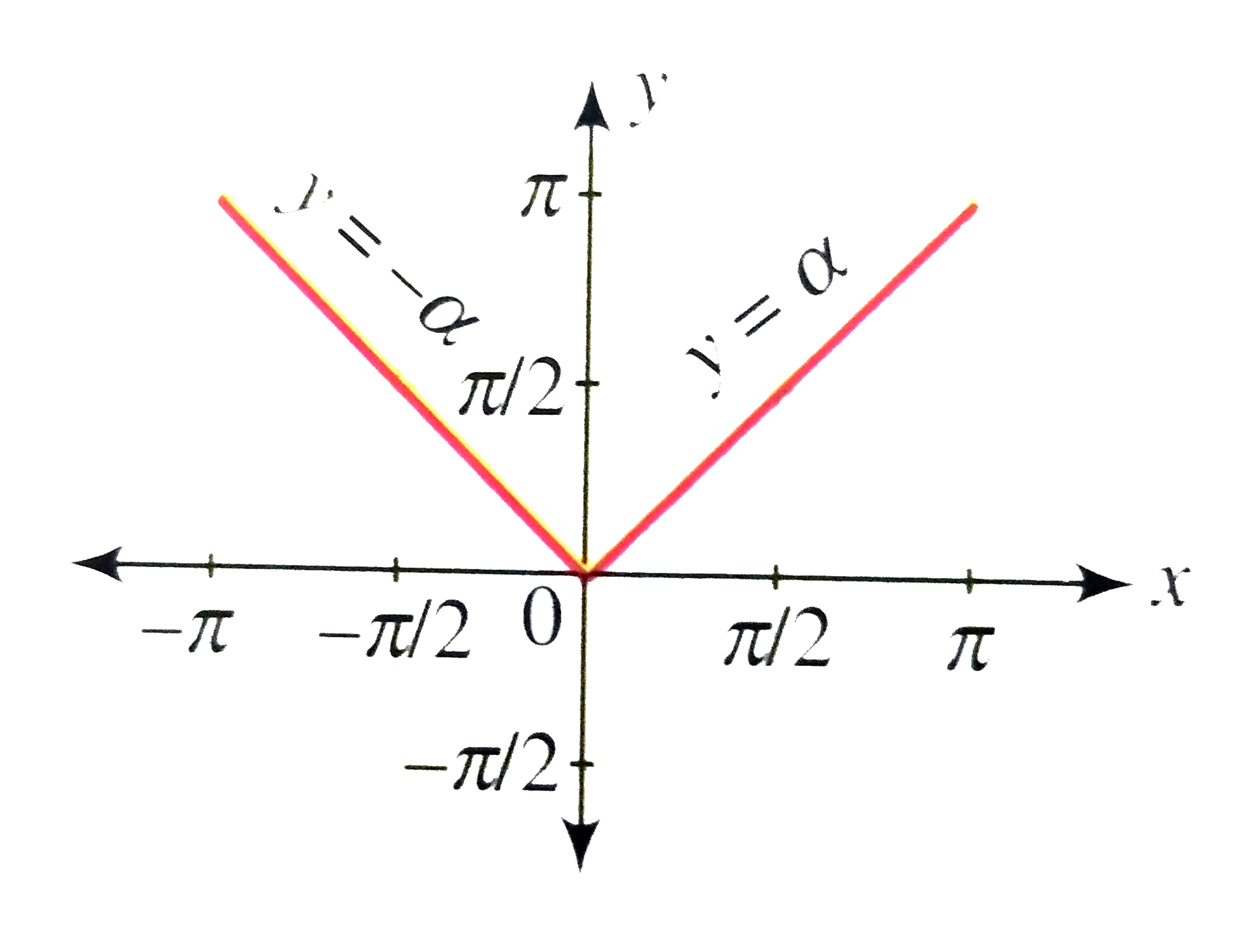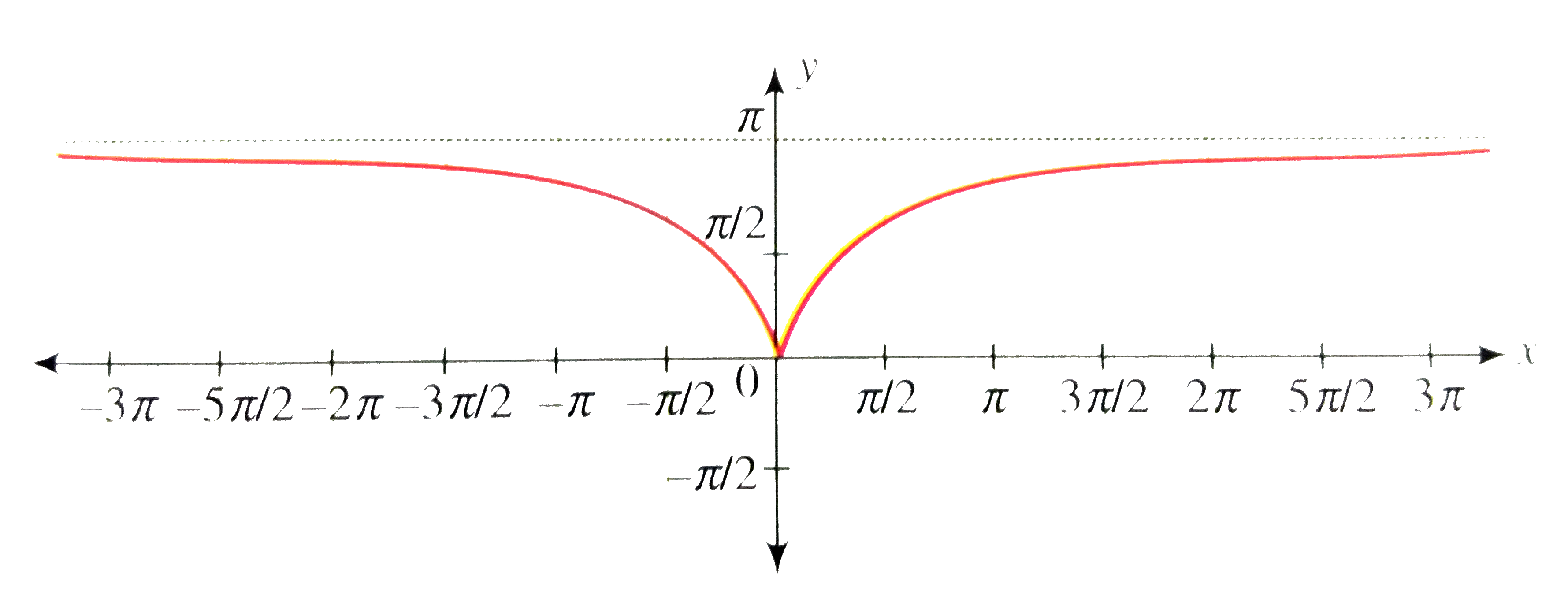InterviewSolution
Saved Bookmarks
| 1. |
Draw the graph of y=cos^(-1)((1+x^(2))/(1+x^(2))) |
|
Answer» Solution :We have `y=F(x)=cos^(2)((1+x^(2))/(1+x^(2)))` LET `x=tantheta, theta in (-pi//2, pi//2)` `rArr""theta=tan^(-1)x` Now `cos^(-1)((1-x^(2))/(1+x^(2)))=cos^(-1)((1-tan^(2)theta)/(1+tan^(2)theta))` `=cos^(-1)(cos2theta)` `=cos^(-1)(cos2theta)," where "alpha in (-pi, pi)` Now consider the graph of `y=cos^(-1)(cos alpha)," where "alpha in (-pi, pi)`  From the graph. `cos^(-1)((1-x^(2))/(1+x^(2)))=cos^(-1)(cosalpha)` `={{:(-alpha,-piltalphalt0),(alpha,0lealphaltpi):}` `={{:(-2tan^(-1)x,-pilt2tan^(-1)xlt0),(2tan^(-1)x, 0le2tan^(-1)xltpi):}` `={{:(-2tan^(-1)x,-pilt2tan^(-1)xlt0),(2tan^(-1)x, 0le2tan^(-1)xltpi//2):}` `={{:(-2tan^(-1)x,xlt0),(2tan^(-1)x,xge0):}` `f'(x)={{:(-2/(1+x^(2)),xlt0),(2/(1+x^(2)),XGT0):}` So f(x) is non-differentiable at x = 0 `UNDERSET(xtooo)(lim)(-2tan^(-1)x)=pi,f(0)=2tan^(-1)(0)=0` Thus, `cos^(-1)((1-x^(2))/(1+x^(2)))" decreases form "pi" to "0" as increases from"-oo" to 0".` `underset(xtooo)(lim)(2tan^(-1)x)=pi` Thus, `cos^(-1)((1-x^(2))/(1+x^(2)))" increases form 0 to "pi" as x increses from 0 to"oo`. From this INFORMATION, we can draw the graph of `y=cos^(-1)((1-x^(2))/(1+x^(2)))` as shown in the following figure. 
|
|